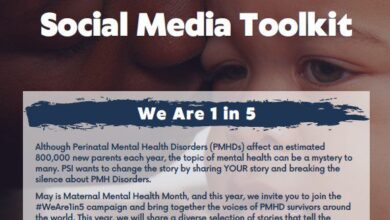How to Prevent Ear Infections in Kids: A Guide for Mums

Share The Mummy, it’s OK Love!
Ear infections in children can be a source of sleepless nights, tears, and worry for many parents. These infections, although common, can lead to more serious health issues if not addressed properly.
In fact, it accounts for 40% to 80% of cases of chronic otitis media in the US. But fear not, dear mothers (and fathers)!
With the right knowledge and approach, you can take proactive steps to prevent these pesky infections and ensure your children stay happy, healthy, and free of ear infections.
Here is a comprehensive guide tailored just for you.
Read on!
Understanding Ear Infections
Ear infections, or otitis mediaoccurs when a viral or bacterial infection affects the middle ear, the space behind the eardrum.
They are particularly common in children because of their shorter, more horizontal Eustachian tubes, which can easily become blocked.
Common symptoms include ear pain, difficulty sleeping, fever, and irritability.
Breastfeeding: The First Line of Defense
Breast milk is not just food; it is a strong shield against ear infections. Breastfeeding for at least the first six months of your baby’s life can significantly lower their risk of ear infections.
The antibodies and immune-boosting properties of breast milk play an important role in protecting your baby from various pathogens.
Immunizations: A Shield Against Infections
Keeping up with your child’s vaccination schedule can greatly reduce their risk of developing an ear infection. Vaccines, such as the pneumococcal vaccine and the flu shot, help protect against bacteria and viruses that can cause ear infections.
Routine vaccinations are a cornerstone of preventive health care for children.
Proper Bottle Feeding Procedures
If you are bottle feeding, pay attention to your baby’s position. Always hold your baby in a relatively upright position while feeding, rather than laying them down with the bottle.
Feeding in a supine position can allow fluid to flow into the Eustachian tubes, leading to blockages and infections.
Regular Check-Ups: Stay Ahead
Regular visits to the pediatrician are important for monitoring your child’s ear health, especially if they’ve had ear infections before. In fact, the leading otolaryngologist in South Florida ENT Parents are advised to go at least once every 3 months with their child to get the latest update of their child’s ear health.
These check-ups can catch potential problems early and prevent small issues from becoming larger ones.
Smoke Free Environment: A Breath of Fresh Air
Exposure to tobacco smoke is a major risk factor for ear infections in children. Smoke irritates the Eustachian tubes and can damage the function of the tiny hairs in the ear that help keep out bacteria and viruses.
Making sure your home and car are smoke-free zones can significantly reduce your child’s risk of ear infections.
Hand Hygiene: The Simplest Prevention
Regular hand washing is one of the easiest and most effective ways to prevent the spread of germs that can lead to ear infections.
Teach your child the importance of washing their hands thoroughly, especially before eating and after playing outside, at school, or at daycare.
Allergies: The Hidden Culprit
For some children, allergies can contribute to ear infections by causing inflammation and blockage of the Eustachian tubes.
If your child has frequent ear infections, talk to your pediatrician about possible allergies. Managing allergies through dietary changes or medication can help reduce the risk of ear infections.
Avoid the Common Cold
Colds are a major cause of ear infections in children. While it’s nearly impossible to prevent every cold, minimizing your child’s exposure to sick people and boosting their immune system through a balanced diet rich in fruits, vegetables, and whole grains can help.
Encourage good sleep habits and physical activity in keep their immune system strong.
Pacifier Use: Use With Caution
Prolonged pacifier use, especially beyond age two, has been linked to an increased risk of ear infections.
If your child uses a pacifier, consider limiting its use as they get older, and make sure it’s kept clean to prevent the introduction of new germs.
Dry Ears: Avoiding Swimmer’s Ear
Swimmer’s ear, an ear canal infection, can also be a concern, especially in older children who spend a lot of time in the water. Drying your child’s ears thoroughly after swimming or bathing can help prevent this type of infection.
Teach them to tilt their head to one side to allow water to escape, and gently dry their outer ear with a towel.
Last Words
Using these strategies, you can take proactive steps to prevent ear infections and protect your child’s ear health.
Remember, you are not alone in this journey. Feel free to contact your pediatrician or healthcare provider with any concerns or questions you may have.
By implementing these preventative measures, you can help ensure that your child stays happy, healthy, and free of ear infections, allowing them (and you!) to enjoy themselves to the fullest. the joy of childhood.





